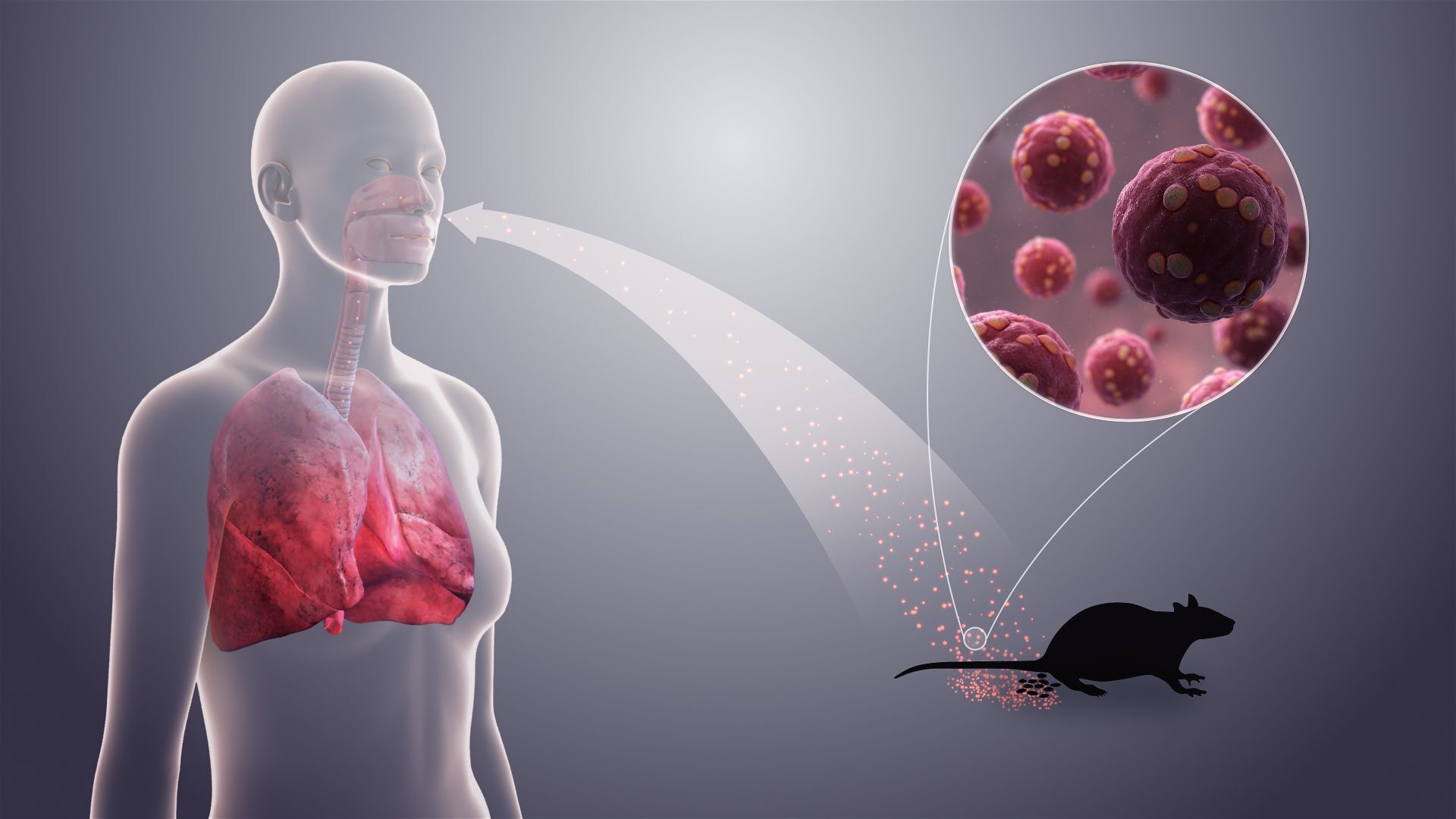
What is Hantavirus Pulmonary Syndrome (HPS)? Hantavirus Pulmonary Syndrome (HPS) is a rare but serious respiratory disease caused by hantaviruses. These viruses are primarily spread by infected rodents, especially deer mice, through their urine, droppings, or saliva. People can contract HPS by inhaling airborne particles contaminated with the virus. Initial symptoms resemble the flu, including fever, muscle aches, and fatigue, but can quickly progress to severe respiratory distress and even multi-organ failure. With a high mortality rate of 30% to 50%, early detection and supportive care are crucial. Understanding HPS's causes, symptoms, and prevention can help reduce the risk of this potentially fatal disease.
What is Hantavirus Pulmonary Syndrome?
Hantavirus Pulmonary Syndrome (HPS) is a rare but serious respiratory disease caused by hantaviruses. These viruses are primarily carried by rodents, especially deer mice. Let's dive into some crucial facts about this disease.
-
Hantavirus pulmonary syndrome is an infectious disease caused by hantaviruses, which belong to the Bunyaviridae family. The Sin Nombre virus is the most common strain in the United States.
-
The primary mode of transmission is through inhalation of airborne particles containing the virus. These particles come from rodent urine, droppings, or saliva.
Symptoms and Progression
Understanding the symptoms and how the disease progresses can help in early detection and treatment.
-
Initial symptoms of HPS include fever, muscle aches (myalgias), headache, cough, and difficulty breathing. These symptoms can be mistaken for the flu.
-
As the disease progresses, patients may experience nausea, vomiting, diarrhea, abdominal pain, and a dry cough. The condition can worsen rapidly.
-
HPS can lead to severe lung and heart problems, including acute respiratory distress syndrome (ARDS) and multi-organ failure. These complications are life-threatening.
Rodent Carriers and Risk Factors
Knowing which rodents carry the virus and the risk factors can help in prevention.
-
In the United States, the primary rodent carriers of HPS are deer mice, cotton and rice rats in the Southeast, and white-footed mice in the Northeast. Deer mice are the most common carriers.
-
Anyone who comes into contact with infected rodents or their contaminated excreta is at risk of acquiring HPS. High-risk activities include cleaning up rodent nests or droppings without proper precautions.
Geographical Distribution and Transmission
HPS is more common in certain areas and understanding how it spreads is crucial.
-
HPS is most common in rural areas of the Western United States, particularly in regions where deer mice are prevalent. However, it can occur anywhere there is exposure to infected rodents.
-
Transmission to humans occurs through inhalation of airborne particles containing the virus. This can happen when individuals breathe in contaminated air or touch contaminated surfaces.
-
HPS is not transmitted from one person to another. There is no evidence to suggest that the virus can be spread through touching or kissing someone with the disease.
Diagnosis and Treatment
Early diagnosis and appropriate treatment are vital for survival.
-
Diagnostic tests for HPS include peripheral blood smear review, which can show thrombocytopenia and atypical lymphocytes. These tests help in identifying the infection.
-
There is no specific treatment for HPS other than supportive care. Patients may benefit from intubation, oxygen therapy, and mechanical ventilation to manage respiratory distress.
-
Supportive care includes managing symptoms such as fever, muscle aches, and respiratory distress. This may involve using medications to control fever and pain.
-
In severe cases, Extracorporeal Membrane Oxygenation (ECMO) may be used to support patients with refractory respiratory failure. This treatment has shown to improve survival rates in patients with HPS.
Prevention and Public Health Response
Preventing HPS involves avoiding contact with rodents and their habitats.
-
Prevention is key in managing HPS. This includes avoiding contact with rodents and safely cleaning up rodent habitats.
-
Common sites for exposure to rodent nests, urine, and droppings include farm buildings, infrequently used buildings, campers or seasonal cabins, camp sites or hiking shelters, attics or basements, and construction sites. These places should be approached with caution.
-
High-risk activities include opening and cleaning long-unused buildings, cleaning up rodent nests or droppings without proper precautions, and working in fields that increase exposure to rodents. Taking preventive measures during these activities is crucial.
-
Public awareness campaigns are crucial in preventing HPS. Educating the public about the risks associated with rodent infestation and the importance of safe cleanup practices can reduce the incidence of the disease.
Global and Epidemiological Insights
HPS has a global impact and understanding its epidemiology can help in managing the disease better.
-
The recognition of HPS coincided with an Institute of Medicine report on emerging infections, which warned about complacency toward infectious diseases in the era of improved sanitation and immunizations. This led to a global response to microbial threats.
-
Andes virus (ANDV)–associated HPS in Argentina and Chile has evidenced a unique predilection for limited person-to-person transmission. There have been at least six reports suggesting potential for person-to-person transmission of ANDV.
-
Epidemiological studies have shown that HPS is associated with a coevolutionary relationship between New World rodents and their viruses. Each rodent-virus species pairing is unique.
-
Hantaviruses are classified into two distinct groups: Old World hantaviruses, which are associated with renal syndrome, and New World hantaviruses, which typically cause cardiopulmonary disease. This classification helps in understanding the disease better.
-
The global response to microbial threats was accelerated after an anthrax bioterrorism incident in the United States. This response served the world well for the response to severe acute respiratory syndrome (SARS).
Research and Development
Ongoing research is essential for improving diagnostic tests and treatments for HPS.
-
Ongoing research and development are necessary to improve diagnostic tests and treatments for HPS. Understanding the coevolutionary relationship between New World rodents and their viruses can help in developing more effective preventive measures and treatments.
-
Molecular biologists have refined diagnostic tests and treatments for hantaviruses, leading to a reclassification of hantaviruses into Old World and New World groups. This has improved our understanding of the disease.
-
Public awareness campaigns are crucial in preventing HPS. Educating the public about the risks associated with rodent infestation and the importance of safe cleanup practices can reduce the incidence of the disease.
-
Preventive measures include ventilating the space before cleanup, sealing rodent entry holes, trapping rodents, and avoiding contact with contaminated materials. Using personal protective equipment (PPE) such as gloves and masks can also reduce the risk of exposure.
-
Healthcare providers play a critical role in managing HPS. Early recognition and treatment are essential for improving patient outcomes.
-
Healthcare workers should be aware of the symptoms and take appropriate precautions when treating patients suspected of having HPS. This can help in preventing the spread of the disease.
-
Understanding the coevolutionary relationship between New World rodents and their viruses can help in developing more effective preventive measures and treatments. This ongoing research is crucial for managing HPS effectively.
Key Takeaways on Hantavirus Pulmonary Syndrome
Hantavirus Pulmonary Syndrome (HPS) is a serious respiratory disease caused by hantaviruses, mainly spread through contact with infected rodent waste. Symptoms start with fever, muscle aches, and headaches, progressing to severe respiratory issues like acute respiratory distress syndrome (ARDS). The disease has a high mortality rate, ranging from 30% to 50%, especially if not treated promptly.
Preventive measures are crucial. Avoiding contact with rodents, safely cleaning up rodent habitats, and using personal protective equipment can reduce the risk. There’s no specific treatment for HPS, but supportive care, including oxygen therapy and mechanical ventilation, can improve survival rates.
Public awareness and education about the risks and preventive measures are vital. By understanding the causes, symptoms, and prevention strategies, we can better protect ourselves and reduce the incidence of this deadly disease. Stay informed, stay safe.
Was this page helpful?
Our commitment to delivering trustworthy and engaging content is at the heart of what we do. Each fact on our site is contributed by real users like you, bringing a wealth of diverse insights and information. To ensure the highest standards of accuracy and reliability, our dedicated editors meticulously review each submission. This process guarantees that the facts we share are not only fascinating but also credible. Trust in our commitment to quality and authenticity as you explore and learn with us.


